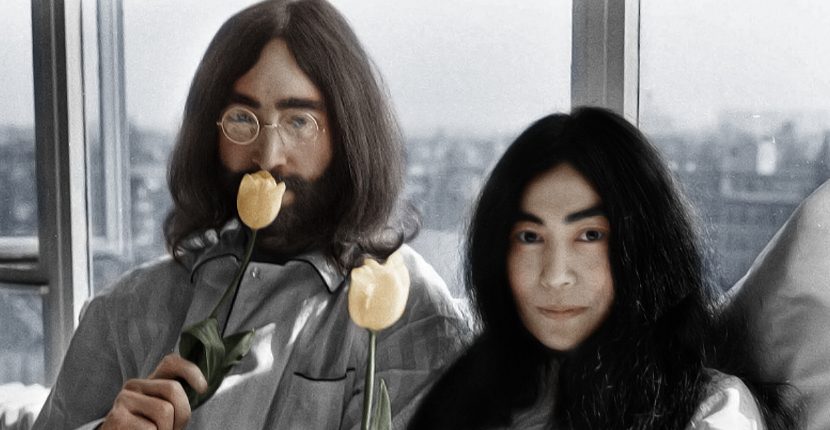On December 10, 1971, a rally was held in Ann Arbor, Michigan, to raise awareness for the cause of John Sinclair, a poet, activist, and music manager who had received a 1o-year prison sentence for giving two marijuana joints to an undercover narcotics officer in 1969. Fifteen thousand young people showed up for the speeches and musical performances and to chant, “Free John, Free John.”
As Sinclair was a founding member of the White Panther Party, a militant counterpart of the Black Panthers, he was on the radar of law enforcement, and the FBI secretly monitored the rally to see who made an appearance.
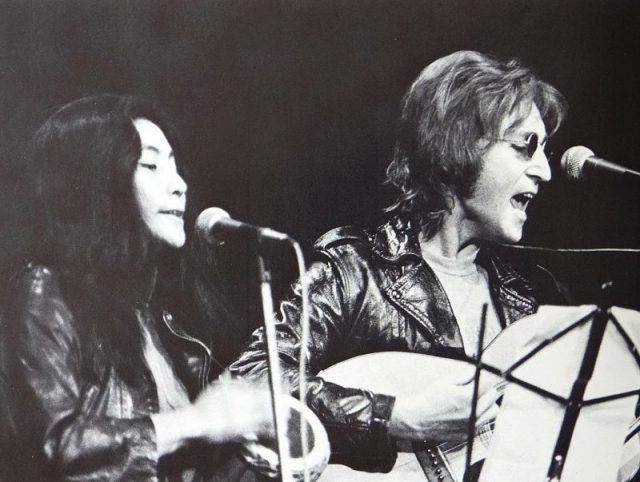
The “Freedom Rally” turned into a veritable Greatest Hits of the radical movement. Speakers included Jerry Rubin, Bobby Seale, Allen Ginsberg, and Ed Sanders. As for the musicians, it might have seemed that the rally already drew pretty exciting talent: Stevie Wonder, Bob Seger, Phil Ochs, and more. But then one of the most famous couples in the world appeared: John Lennon and Yoko Ono.
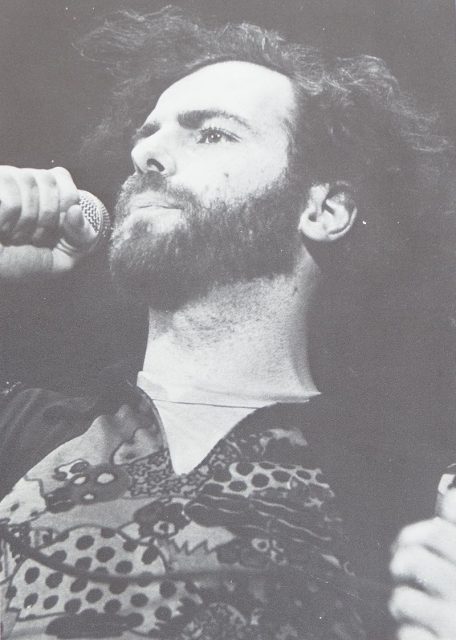
The New York Times reported, “John Lennon, the former Beatle, and his wife, Yoko Ono, flew in from New York and appeared for 10 minutes at about 3 a.m. when the arena was filled with a cloud of marijuana smoke coming from thousands of marijuana cigarettes that were passed from person to person.
“It was Mr. Lennon’s first major public appearance in the United States in two years. He performed several new numbers—one dedicated to the Attica rebellion and an other to the struggle in Northern Ireland. The last number, which brought wild applause, was a song dedicated to Sinclair.”
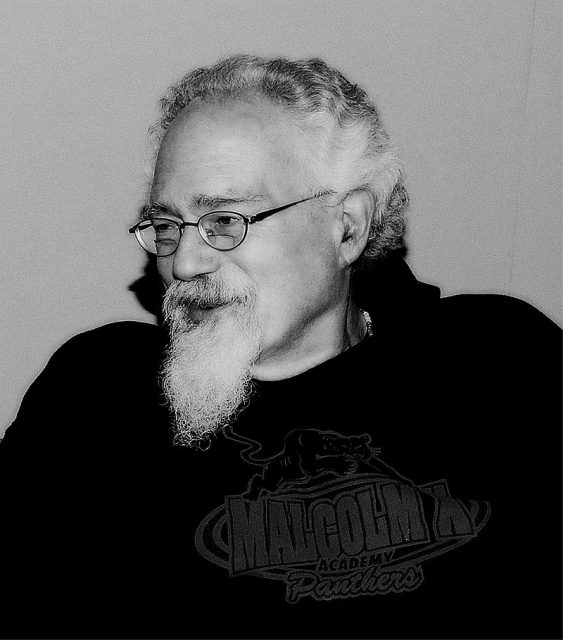
Sinclair was released from prison within days, but unknown to Lennon, the FBI took particular note of his remarks and singing. “This was essentially the beginning of the [American] government’s involvement in Lennon’s life,” wrote the website Ultimate Classic Rock.
Not only did the FBI put Lennon under surveillance — that was just the beginning. There was a steady, aggressive effort to deport Lennon from the United States, an initiative that reportedly was approved of by President Richard Nixon. Over the next five years, the FBI gathered some 300 pages of information on John Lennon.
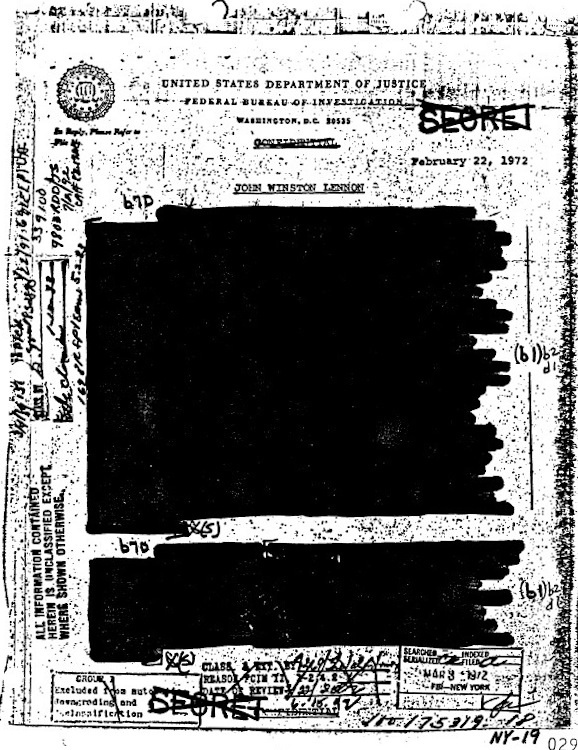
Yoko Ono, who was going through a custody dispute with her first husband, did not want to leave the U.S. And so Lennon struggled to remain in the country.
After Lennon was killed by Mark David Chapman in 1980, historian and university professor Jon Wiener spent 14 years fighting to get the FBI to release its files on Lennon under the Freedom of Information Act. Wiener hired ACLU lawyers and the team persevered, pro bono, in their effort to obtain those files.
Wiener’s eventual book making use of what he obtained, Gimme Some Truth: The John Lennon FBI Files, reveals that President Richard Nixon was worried that Lennon could hurt his chances of re-election.
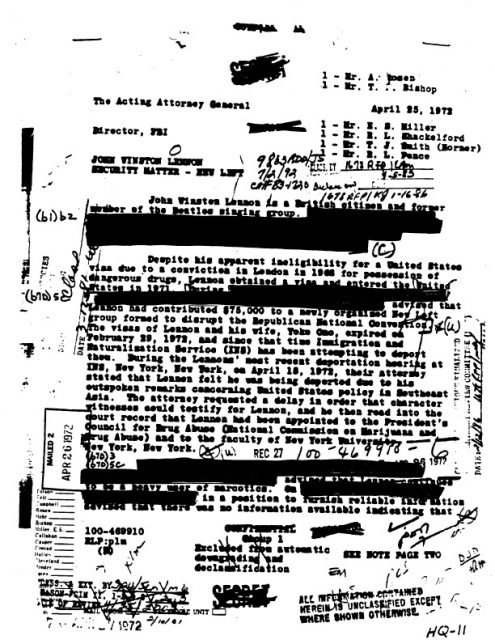
“The ’72 election was going to be the first in which 18-year-olds had the right to vote,” Wiener said in a NPR interview in 2000. “Before that you had to be 21. Everybody knew that young people were the strongest anti-war constituency, so the question was, for Lennon, how could he use his power as a celebrity to get young people into the political process?”
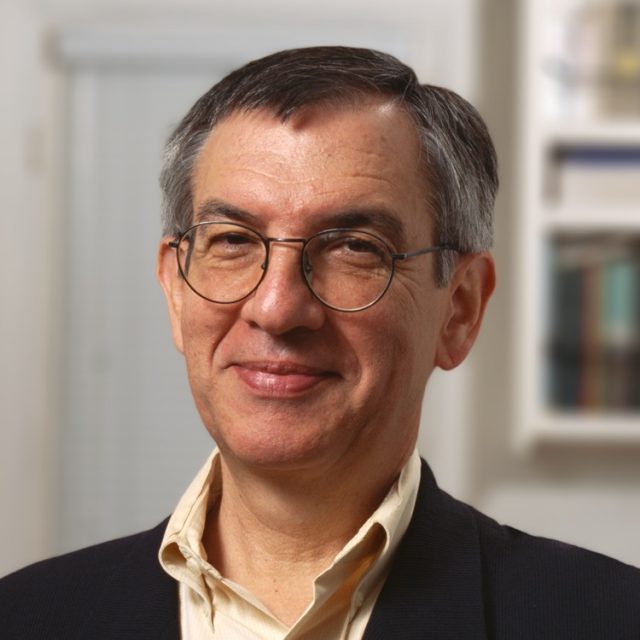
Lennon was actually quite interested in becoming part of such a youth group movement opposing the Vietnam War and trying to defeat Nixon. He and Rubin discussed organizing a tour intended to mobilize the vote that would follow the incumbent president’s campaign stops across the country, ending with a festival in Miami, where the Republican National Convention would take place.
How to handle Lennon as a threat became a subject of letters going between J. Edgar Hoover and President Nixon.
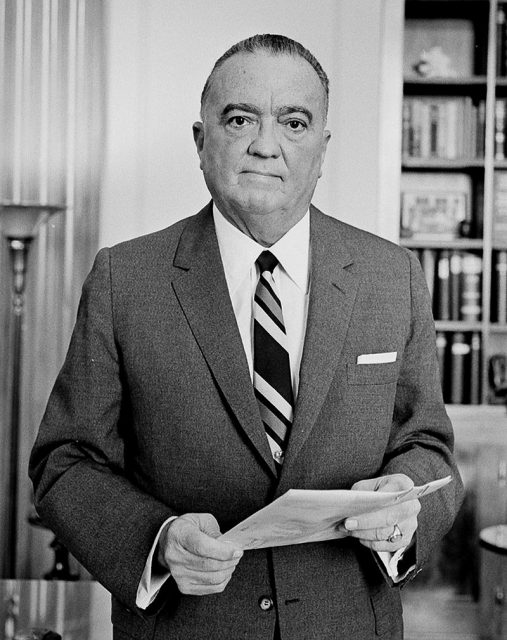
In Wiener’s book, he wrote: “For Nixon and Hoover, as another historian has written, ‘The world was a battlefield filled with active and potential enemies.’ Lennon became identified as one of those enemies even before he publicly opposed Nixon’s reelection. In Nixon’s mind, he was forever a victim forced to defend himself against unrelenting and unscrupulous enemies. Hoover’s rhetoric was more violent… Hoover said about Lennon ‘his main reason for being is to destroy, blindly and indiscriminately, to tear down and provoke chaos.’ ”
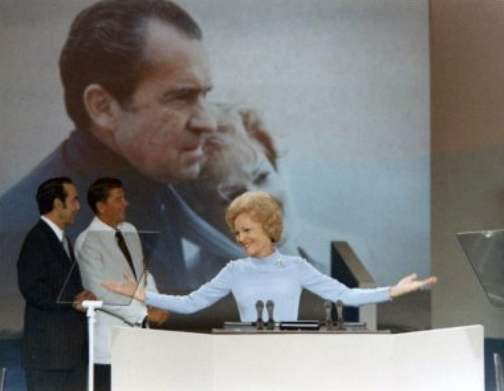
The way they tried to neutralize John Lennon was to threaten him with deportation.
On March 1, the Immigration and Naturalization Service delivered a letter to the Lennons requesting that they leave the country within two weeks or face deportation hearings. They used Lennon’s 1968 marijuana possession – a misdemeanor – as the reason for the deportation.
Wiener told NPR, “For much of 1972 and ’73, Lennon was under an order to leave the country within 60 days. He had very talented legal help and they kept getting these deadlines extended.” Hoover died in May 1972, but hassling Lennon remained a priority.
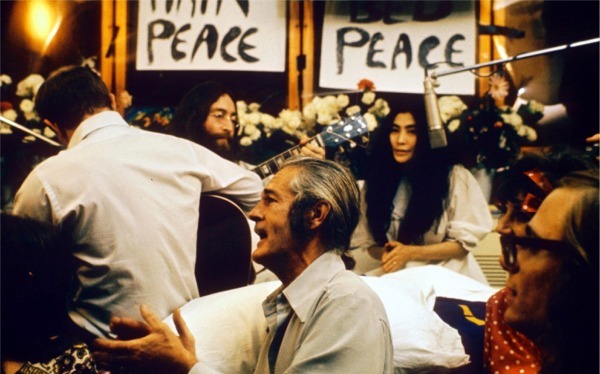
“There was a lot of people mobilized to support him, but really, it wasn’t until after Watergate, after Nixon left office, that the Gerald Ford administration immigration service finally agreed to grant Lennon his green card on very narrow legal grounds,” said the author. “So for two years he was under a 60 day order to leave the country, almost continuously.”
Sculptor Makes Incredible Model of John Lennon
John Lennon received his green card eventually. But the FBI and government targeting under Nixon did succeed in one of its goals. Lennon decided to withdraw from Rubin’s plans to demonstrate against Nixon and work to get youths registered to vote because it was too dangerous to his fight to stay in the country.
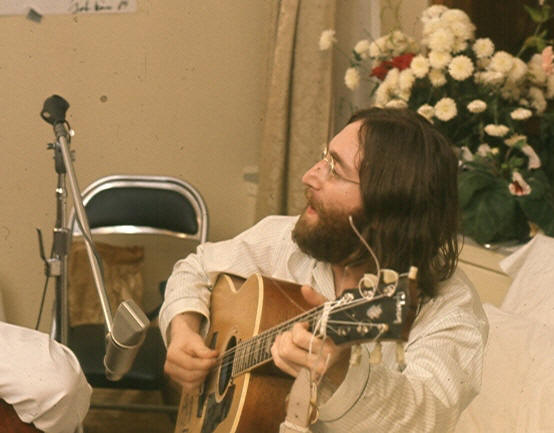
It was perhaps fortunate that Lennon pulled out. Because the FBI, through its surveillance, was thus aware that Lennon was no longer planning to be active against Nixon. One of the government’s previous plans was an ominous act — to have something waiting for Lennon in Miami should he have gone there during the Republican National Convention. After learning of his change in tactics, the FBI too changed its plans.
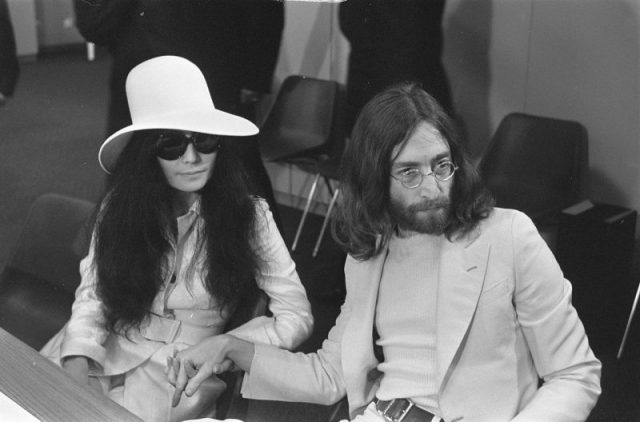
Was the FBI planning to set up Lennon in a drug bust? Through the Freedom of Information Act, the author was able to see a disturbing document. “There’s a memo from J. Edgar Hoover to the head of the Miami FBI office that suggests that if Lennon could be arrested on possession of narcotics charges he would become more immediately deportable,” said Wiener. Because Lennon did not go to Miami, nothing was done.
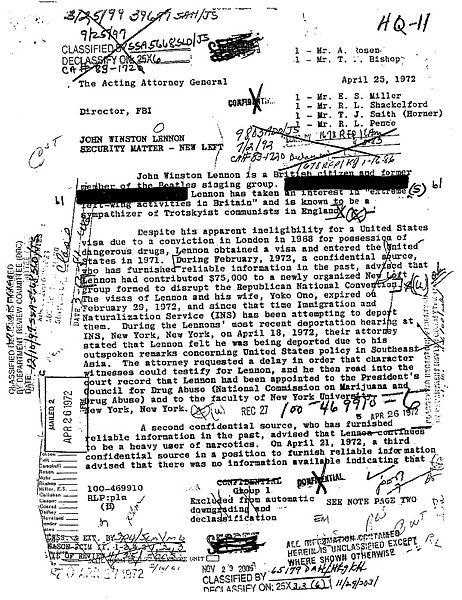
When Wiener, in the research for his book, pressed for the files on Lennon in the Miami field office, he was told that they had all been destroyed “as part of a routine procedure.”
Read another story from us: John Lennon’s Assassin Denied Parole
“It’s still hard to figure out whether the effort to deport Lennon was a complete paranoia on Nixon’s part,” said Wiener in the NPR interview. “After all, Nixon did win the 1972 election by an overwhelming landslide. His opponent, George McGovern, carried what, two or three states. So maybe the whole thing was just paranoia on the part of Nixon matched by paranoia on the part of Lennon and his friends.”
Nancy Bilyeau, a former staff editor at Entertainment Weekly, Rolling Stone, and InStyle, has written a trilogy of historical thrillers for Touchstone Books. For more information, go to www.nancybilyeau.com.
